An Excellent but Unfathomable Jack of All Trades
In the last few years, iFi has done much to gain success with personal audio electronics enthusiasts. They solidified their position in the market with excellent performing mid-range to upper-end DACs and portable headphone amplifiers.
Most recently they have impressed with the improved Black Label variants of their popular iDSD Micro and Nano products. While it might be easy to be overshadowed by a similar successful company like FiiO, to my eyes iFi has clearly defined itself with distinctive and generally higher-quality products.
Full disclosure, an original nano iDSD has been my go-to DAC of choice for my stationary headphone tube setup for a few years now. I’ve had zero complaints with the product, so I had high expectations when iFi announced they were releasing a new product line (Generation X) spearheaded by the feature-packed xDSD.
New form factor. New functionality. Does this mean a new standard of excellence?
- Small form-factor with excellent build quality.
- First-rate, transparent sound quality (even via Bluetooth).
- Balanced headphone 3.5mm/line output with dual-mono amplifiers (includes line output mode).
- Many connectivity options (USB, optical and Bluetooth aptX/AAC).
- Playback of most high-resolution file types supported.
- Chrome finish on the magnesium alloy case will ALWAYS be covered in fingerprints. (Unless, perhaps, you are a glove-wearing serial killer.)
- Complexity and wealth of features require a (maybe impossible) learning curve to operate and interpret.
- No USB C, OTG or portable cables included.
- Complicated multi-featured plastic volume control just doesn’t ‘feel’ premium.
- Switching between wired and wireless connections was never seamless.
What’s in the box?
- USB A (male-female) extension cable (blue).
- Short black USB micro (male) to USB A (male) cable for charging.
- TOSLINK optical adapter.
- USB A-B adapter (female).
- Strips of 3M double-sided tape.
- Black velvet fabric storage bag.
- Folding instruction card. (This is important – so don’t misplace it!)
Features
- Playback: High-resolution audio up to PCM 768kHz, DSD 512, and MQA.
- DAC: Burr-Brown true native DSD DAC chipset.
- Amplifier: dual-mono with 500 mW per channel and pure analog volume control.
- Headphone Support: 32-600 Ohm headphones (3.7V/270mW @50 Ohm, 3.8V/48mW @300 Ohm, 3.8V/24mW @600 Ohm). S-Balanced compatible 3.5mm headphone output. 2.1V line out mode.
- Wired Connectivity: USB and S/PDIF Coaxial and Optical (up to 192kHz/24Bit) inputs.
- Wireless: Bluetooth aptX and AAC support.
- Signal Processing: analog Signal Process (ASP) 3D+ and XBass circuits.
Build Quality and Aesthetics
Make no mistake; the glossy magnesium alloy shell with a black plastic cap on the rear (for improved Bluetooth reception) has a premium fit and feel. The solid feeling mass (127g) and brilliant mirror finish imply intrinsic worth.
But I hate it.
Smudge Magnet
You can’t touch the surface without smearing it with fingerprints. While it does look terrific in pictures (after much polishing), as soon as you pick it up it becomes a smudged mess. This isn’t a desktop unit that you will never touch. It’s meant for picking up and putting in pockets. I can’t believe testers didn’t express concerns about the finish in the design phase.
Small Enough
The dimensions are: 67mm wide, 95mm long, and 19mm high. While not super-svelte, it can cable tether reasonably with a phone for portable use. Of course with Bluetooth, it doesn’t need to be connected via a wire to function. The inputs are all located on the back plastic band on the rear of the unit, with audio controls and output on the front.

The Multi-Function Volume Wheel
I’m torn on the analog volume control. On one hand, it’s a wonder of multi-function technology. It is centrally located and pushes in to turn the xDSD on/off and hold to select the input mode (wired or Bluetooth wireless). It changes color depending on volume level range (blue-magenta-cyan-green-yellow-red – in that order as volume increases). It’s not a potentiometer with fixed endpoints – it spins with a clicky-feeling resistance in either direction. It functions well and is reasonably resistant to unwanted adjustment while in a pocket.
However, it really isn’t entirely intuitive. Seriously are 6 color-coded volume level ranges necessary? I just can’t decide if it’s a helpful feature or simply a gimmick. Nor is the volume wheel as satisfying or premium feeling to operate as a standard metal knobbed volume pot.
Color Does Not Equal Safe Listening Levels
Please note that just like any other amplifier, the volume that the user experiences is a function of the characteristics of what headphones are attached, the volume output of the playback device and of audio file itself, as well as the amplifier. So one cannot always expect a particular color range on the volume control to always indicate a safe listening level. As always use caution when listening at loud volume levels.
Usability
Time with the instruction card was necessary for me to figure out how to work the iFi xDSD. This is a function of the sheer amount of features and files support, (admittedly cleverly) miniaturized into a small form factor. However, the increase in the average size of cell phones over the last few years speaks to there is such a thing as too many features in too small a device.
Pretty (Confusing) Colored Lights
Tiny labels and multi-color status LEDs are present for 3D+, XBass, kHz, INPUT and charging. If you could memorize the meaning of the vast variety of colors, it does indicate bit rate and type of digital file being played. I’d happily trade the shiny print-capturing finish for a flat matte black cover with a laser engraved chart on the case listing LED color with associated description.
The tiny LEDs work well (and I personally like this sort of indicator) but keep in mind, there is A LOT going on with this diminutive piece of high-tech portable high-fi.
I do acknowledge that only requiring one small switch on the back, and one small button plus the volume control on the front, keeps the controls about as clean as they can be.
Portability
I tried both wired OTG connections with Android and Apple (using a Lightning to USB Camera Adapter). The recessed male USB A jack on the back of the xDSD is clearly designed with the Apple camera adapter in mind. It fits perfectly without requiring further connectors. Desktop use via USB with Windows 10 and Apple OS High Sierra was literally plug-and-play.
Wireless Playback
But let’s be honest. It’s the Bluetooth support that really sets this device apart. In a portable environment, any potential sound quality loss is negligible, and the convenience of not having to stack devices or worry about rubber bands or finicky little cables was terrific.
In my experience, switching back and forth between wireless and wired never seemed to work quite right the first time.
It’s unlikely that an owner (who is not interested in testing every function repeatedly back and forth) will run into this frustration, but it seemed I had to always have my phone “forget” the device and reconnect in order to change back to Bluetooth connection from a wired connection. First, it would appear to connect normally, yet produced no sound during playback.
This testing was done was with an iPhone X and iOS 11.4.1 (current as of writing). YMMV. On the positive, once connected, I experienced no dropouts.
Battery and Charging
With 6-8 hours of claimed battery life (3.8v, 2200 mAh), it will meet most portable needs but will need to be charged daily for heavy users. The rear micro USB port’s sole function (somewhat surprisingly on this device) is for charging the internal battery only.

Sound Quality
Line out mode allows for a high quality 2-channel stereo connection, so the xDSD is a great option for desktop or home stereo use. While one could connect their computer or playback device via USB cable, IMO the wireless convenience of Bluetooth outweighs any minor perceived or imagined impact on the sound quality. For my uses it was indistinguishable from a wired connection.
That Digital Filter Switch
iFi has again included a ‘Measure/Listen’ digital filter switch on the back to change between optimum sound quality for testing gear or for usage, but the difference between modes was so minor I left the device in ‘Listen’ mode and forgot about it. This is what I expect the vast majority of owners will do.
Sound Enhancement Features
I’m not a die-hard audio purist at heart. I use the ‘loudness’ button on my vintage stereo gear, and depending on mood, song, headphones, etc. I’m not averse to applying equalization (EQ) to enhance my enjoyment.
So yes, I played with the XBass and 3D+ features on the xDSD. I can unconditionally say these are applied thoughtfully and carefully, and are analog in function rather than digitally implemented. XBass is a light-handed bass boost, while 3D+ is intended to widen the soundstage to recreate a live stage atmosphere.
Impact on the sound is quite subtle and I found it did help to add a bit of fullness to my custom Grados. Use them if you like and don’t let those purist snobs scare you away from trying them out.
Overall the sound quality can be described as transparent, clean and clear. It’s what you want from an amplifier. It is what it should sound like. Not emotionless, crunchy or digital sounding. The xDSD presents the music with authority but without adding or removing anything.
Power and Headphone Pairing
No question there is enough power on tap to run most headphones. I used the iFi quite a bit with my Sennheiser HD650 headphones and while the xDSD is certainly powerful enough to drive them to a loud listening level, I’m so used to pairing the 300 Ohm Sennheisers with a Bottlehead Crack OTL tube amplifier that I found myself fairly dissatisfied when listening to them from a solid-state device such as this. The overall experience was flatter than I like and I wouldn’t personally say this is a great match with the xDSD.
However paired with Grado SR325, Symphones v8 custom Grados, and Meze 99 Classics, I thought the xDSD sounded great.
Conclusion
When iFi offered to loan the xDSD for review purposes, I was excited and somewhat concerned. “Oh-oh”, I said to myself, “I’m going to have serious gear envy and want to buy this device once I’ve used it.” I love my trusty old iDSD nano, so a new feature-rich, better-sounding iFi device was likely going to seriously test my impulse control.
Oddly enough, that isn’t what happened to me. Oh, don’t get me wrong; it’s a really nice product.
It sounds great. The Bluetooth playback is impeccable. The xDSD has features and file support other lesser products can only dream of.
Great but Not Perfect
For me, the iFi xDSD isn’t a perfect match. I never quite got comfortable with the controls. I likely would never have the meaning of the LED indicator colors memorized. I just couldn’t quite warm up to the clicky, spinny, volume wheel. Let us not forget that beautiful, pointless and oh-so-easy to smudge finish on the oddly rippled exterior.
Competitors to Consider
If you are in the market for a portable DAC and amplifier unit, there are a few notable competitors out there:
The Chord Mojo has coaxial-wired support but no Bluetooth (unless upgraded by pairing it with a Chord Poly) offered in a similar size and form factor. Unfortunately, the Mojo does not support the hi-res MQA (Master Quality Authenticated) format.
The CEntrance BlueDAC with Bluetooth support, balanced output, but not quite the variety of format support, is another well-reviewed option.
If Bluetooth isn’t important to you, at about half the price, the excellent iFi Nano iDSD Black Label has to be on your short list.
I’m still really happy with my few years old JDS Labs C5D (in the size comparison picture above) for tethered portable listening on the go.
Yet if you want it all: excellent sound quality, outstanding file support, terrific wired and wireless connectivity options, and LED indicators with many colors, the iFi xDSD stands alone. It really does it all in a very small and attractive (as long as you don’t touch it) package.
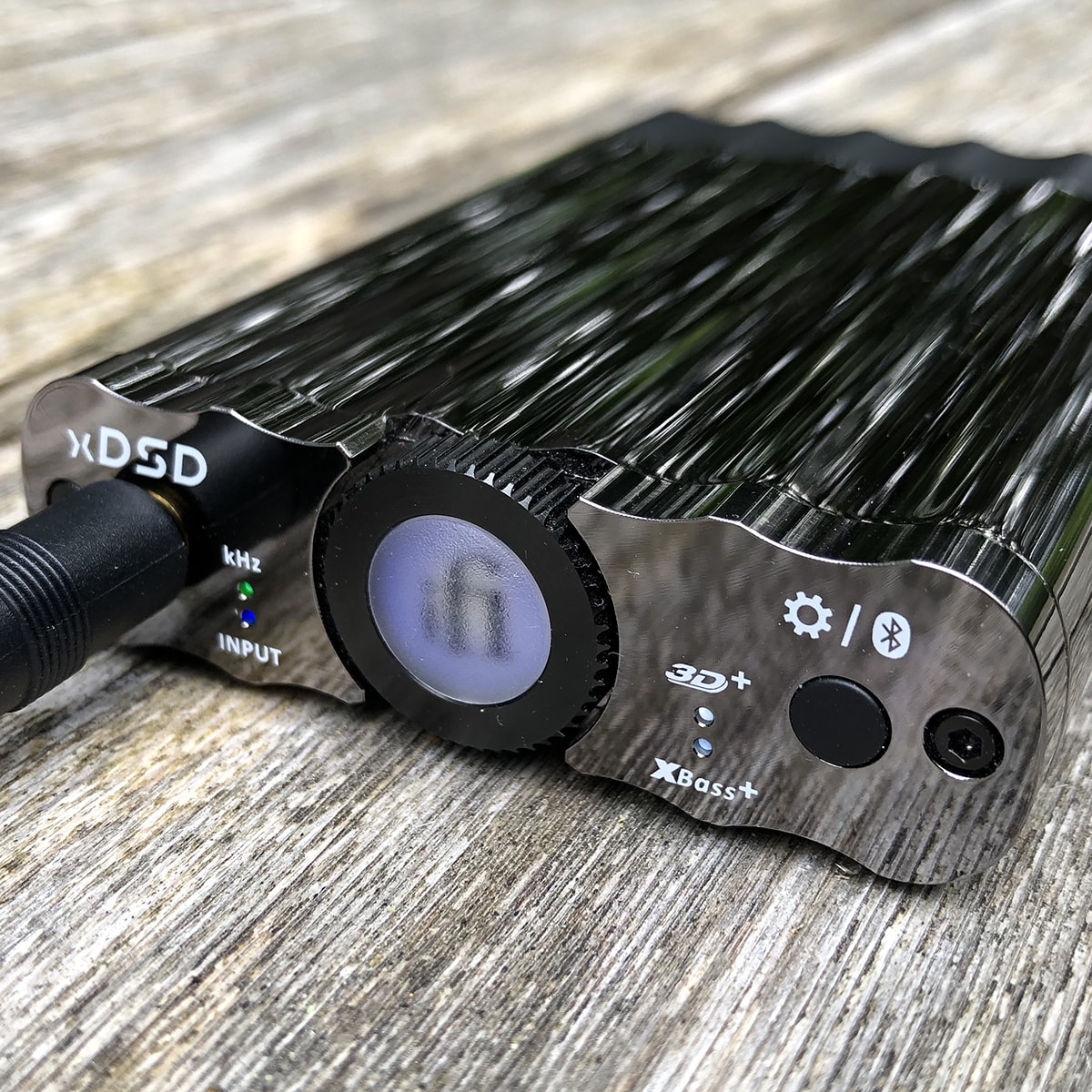
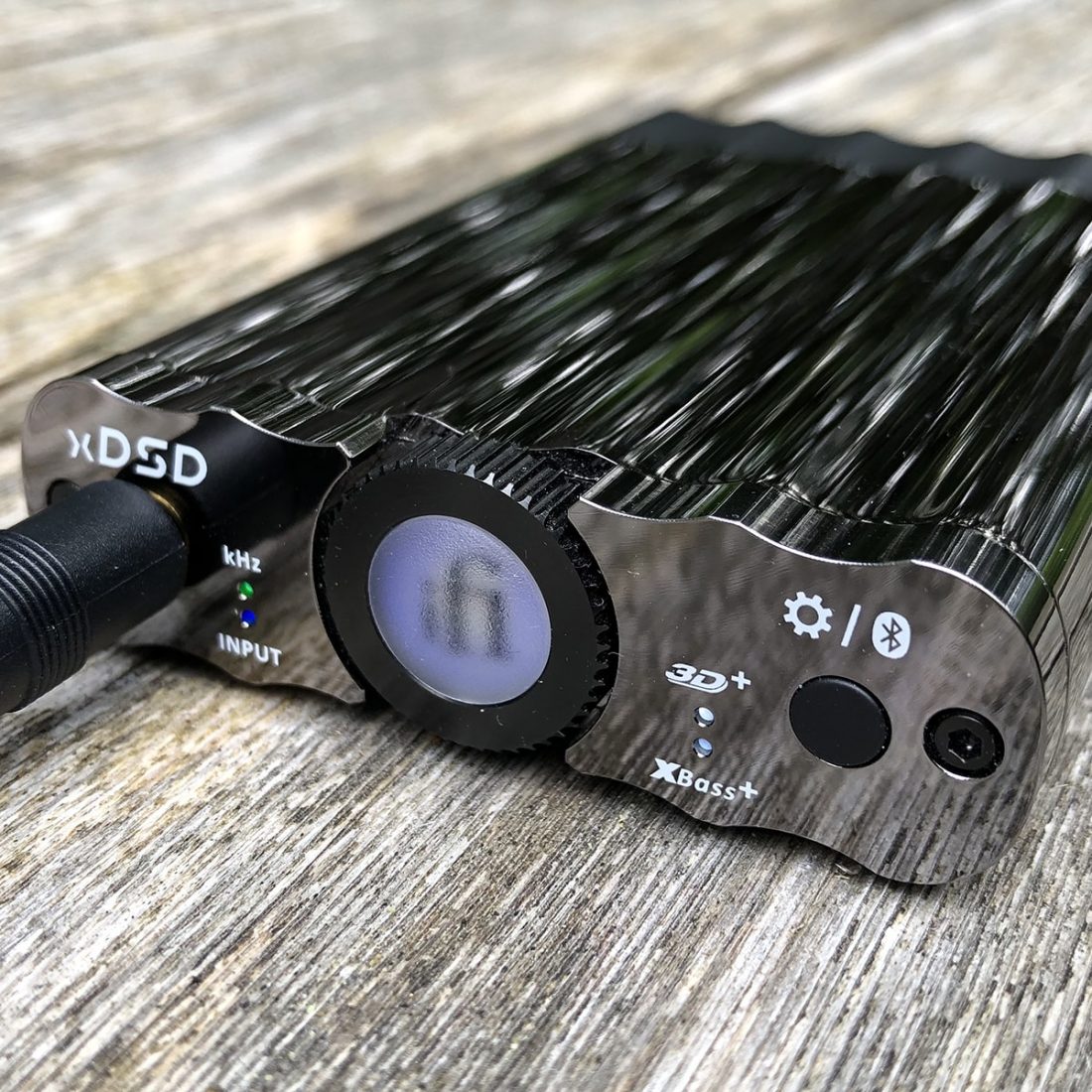





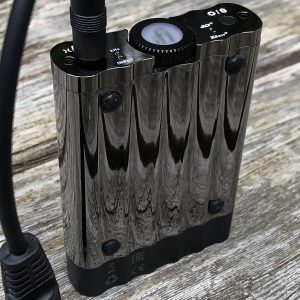




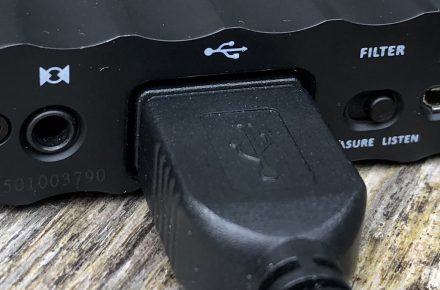
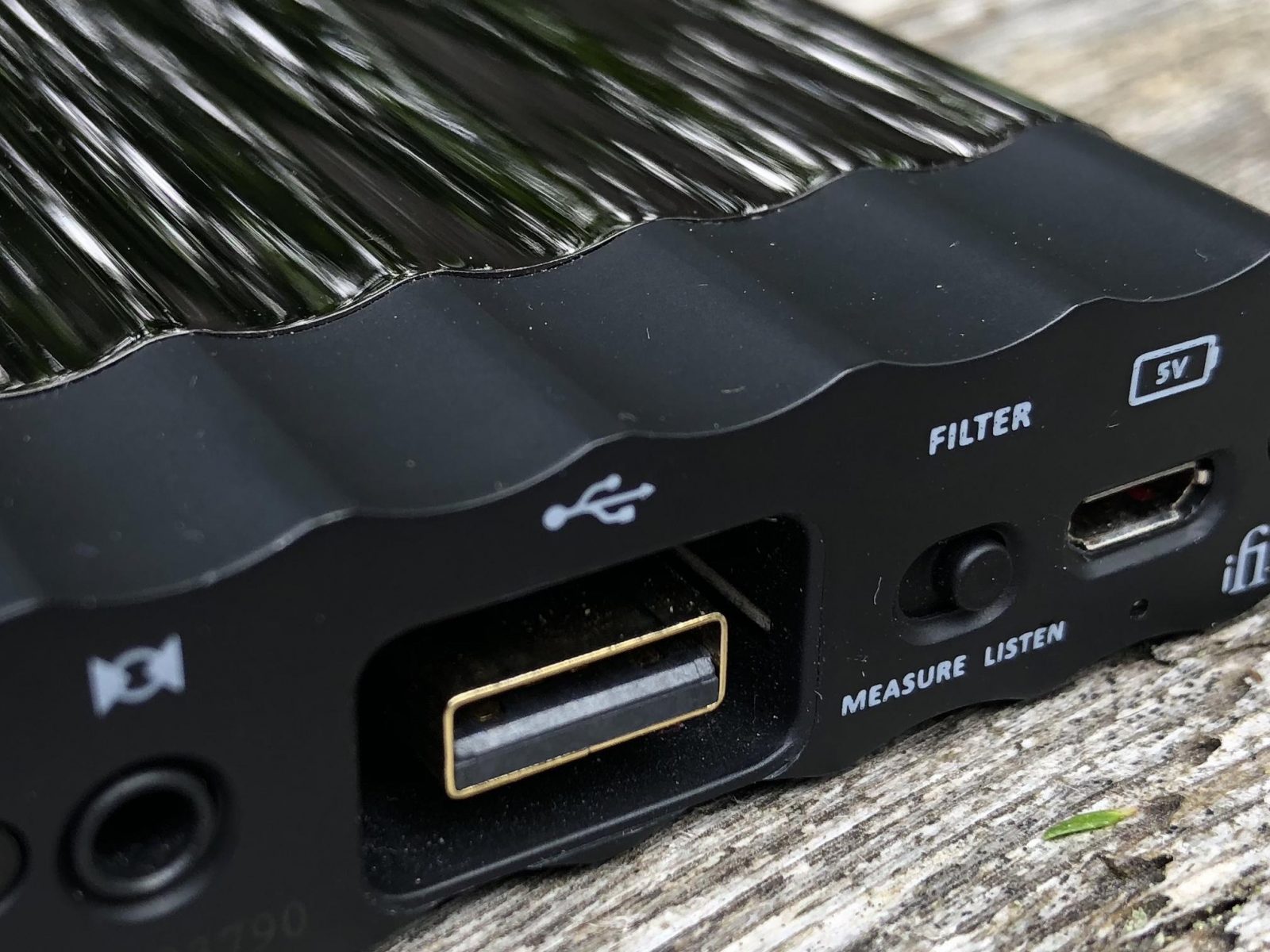

I initially liked xDSD very much, while listened flac rips from CD but very soon it turned out that xDSD badly compromised PCM rendering quality for the sake of MQA in 5.3. Is it just my problem? Like I wrote the same files are not problem for Centrance DACportable or Chord Mojo.
Revision 3: xDSD could not handle even PCM 24/192 with firmware 5.3C, gives clicks and noises. Very disappointing because CD resolution flacs sound better with 5.3 firmware. Contacted iFi – answer “it does”.
Revision 2: downgraded driver to 5.2 and it fixed the situation now it plays PCM files up to 384kHz perfect. I wish iFi would be more responsible in depicting the situation. Ruining good performance for the inconsequential MQA is total nonsense.
Revision: it is not able to handle correctly PCM files 384kHz (in spite of company’s statement that it could), what a disappointment! It makes clicks and noises. These files are not a problem at all for Centrance DACportable or Chord Mojo.